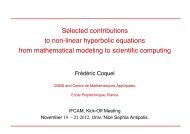The construction of the wonderful canon of logarithms
The construction of the wonderful canon of logarithms
The construction of the wonderful canon of logarithms
Create successful ePaper yourself
Turn your PDF publications into a flip-book with our unique Google optimized e-Paper software.
;<br />
Notes. 91<br />
10,000,000 he multiplied his numbers and <strong>logarithms</strong> by that amount,<br />
<strong>the</strong>reby making <strong>the</strong>m integral to as many places as he intended to print.<br />
In this we follow his<br />
indication <strong>of</strong> this multiplication.<br />
example, omitting, however, from <strong>the</strong> formulae <strong>the</strong><br />
In sec. 30, Napier shows that <strong>the</strong> logarithm <strong>of</strong> 9999999,<br />
<strong>the</strong> first<br />
proportional after radius in <strong>the</strong> First table, lies between <strong>the</strong> limits<br />
i.ooooooiooooooioetc, and 1.000000000000000 etc. And in sec.<br />
31, he proposes to take 1.00000005, <strong>the</strong> arithmetical mean between<br />
<strong>the</strong>se<br />
limits, as a sufficiently close approximation to <strong>the</strong> true logarithm<br />
for, <strong>the</strong> difference <strong>of</strong> this mean from ei<strong>the</strong>r limit being .00000005,<br />
it cannot differ from <strong>the</strong> true logarithm by more than that amount,<br />
which is <strong>the</strong> twenty millionth part <strong>of</strong> <strong>the</strong> logarithm. But <strong>the</strong>re can be<br />
little doubt that Napier was able to • satisfy himself that <strong>the</strong> difference<br />
would be very much less, and that his published <strong>logarithms</strong> would be<br />
unaffected.<br />
We proceed to show <strong>the</strong> precise amount <strong>of</strong> error thus introduced into<br />
<strong>the</strong> logarithm <strong>of</strong> 9999999.<br />
If we employ <strong>the</strong> formula<br />
substituting 1 0000000 for n, and multiplying <strong>the</strong> result by 1 0000000, as<br />
before explained, we have<br />
1.000000050000003333333583 etc.<br />
Again, if we take <strong>the</strong> arithmetical mean <strong>of</strong> <strong>the</strong> limits, carried to a similar<br />
number <strong>of</strong> places, we have<br />
1.000000050000005000000500 etc.<br />
<strong>The</strong> error introduced is consequently<br />
.000000000000001666666916 etc.<br />
or about a six hundred billionth part in excess <strong>of</strong> <strong>the</strong> true logarithm.<br />
It will be observed that besides being very much less, this error is<br />
in <strong>the</strong> opposite direction from that caused by <strong>the</strong> mistake in <strong>the</strong><br />
Second table.<br />
We have given above <strong>the</strong> analytical expression for <strong>the</strong> true logarithm,<br />
namely, ^ + 2V2<br />
+ sSS + 4^ + s^ + ^t


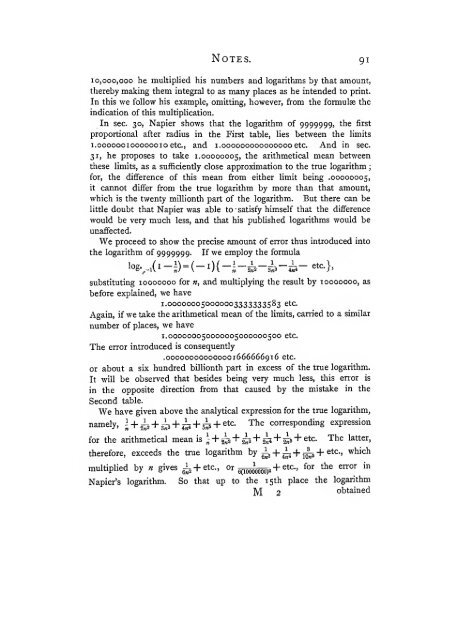
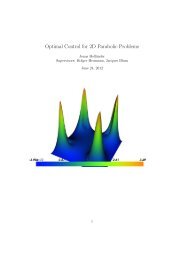
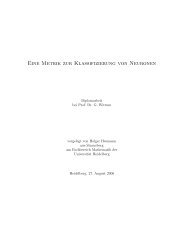
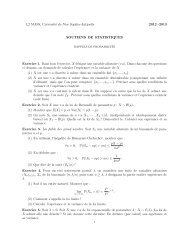
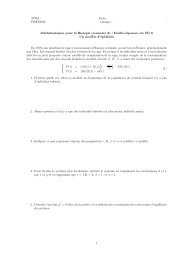


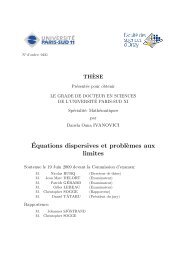
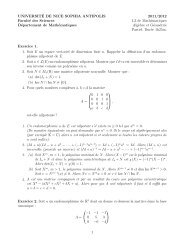
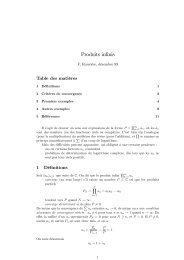
!['eries enti\`eres (+ [D78 Th d'Abel angulaire])](https://img.yumpu.com/14067031/1/184x260/eries-entieres-d78-th-dabel-angulaire.jpg?quality=85)
